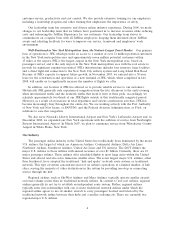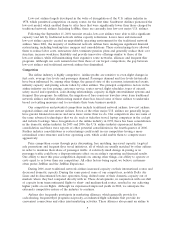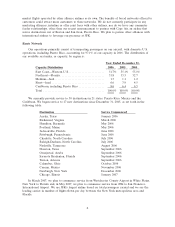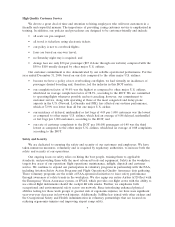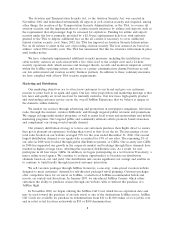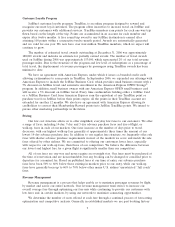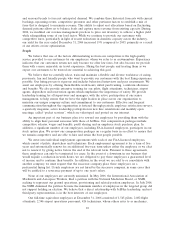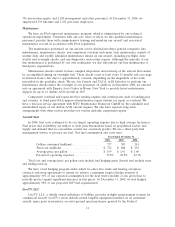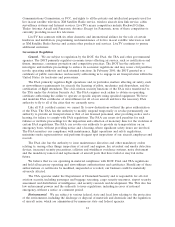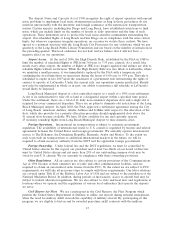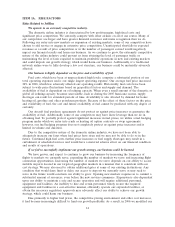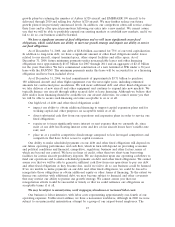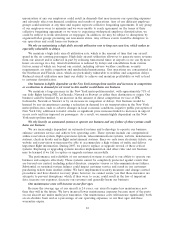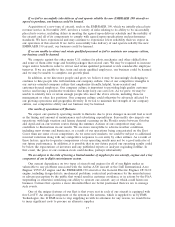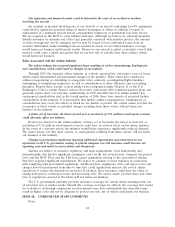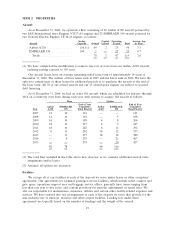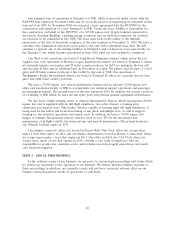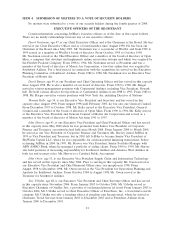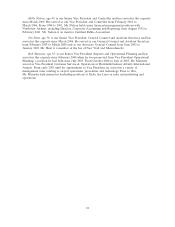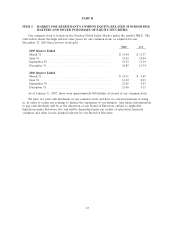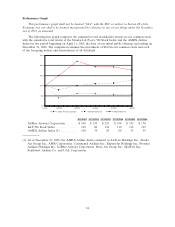JetBlue Airlines 2006 Annual Report Download - page 24
Download and view the complete annual report
Please find page 24 of the 2006 JetBlue Airlines annual report below. You can navigate through the pages in the report by either clicking on the pages listed below, or by using the keyword search tool below to find specific information within the annual report.ITEM 1A. RISK FACTORS
Risks Related to JetBlue
We operate in an extremely competitive industry.
The domestic airline industry is characterized by low profit margins, high fixed costs and
significant price competition. We currently compete with other airlines on all of our routes. Many of
our competitors are larger and have greater financial resources and name recognition than we do.
Following our entry into new markets or expansion of existing markets, some of our competitors have
chosen to add service or engage in extensive price competition. Unanticipated shortfalls in expected
revenues as a result of price competition or in the number of passengers carried would negatively
impact our financial results and harm our business. As we continue to grow, the extremely competitive
nature of the airline industry could prevent us from attaining the level of passenger traffic or
maintaining the level of fares required to maintain profitable operations in new and existing markets
and could impede our growth strategy, which would harm our business. Additionally, if a traditional
network airline were to fully develop a low cost structure, our business could be materially adversely
affected.
Our business is highly dependent on the price and availability of fuel.
Fuel costs, which have been at unprecedented high levels, comprise a substantial portion of our
total operating expenses and is our single largest operating expense. Our average fuel price increased
24%in 2006, which has adversely affected our operating results. Historically, fuel costs have been
subject to wide price fluctuations based on geopolitical factors and supply and demand. The
availability of fuel is dependent on oil refining capacity. When even a small amount of the domestic or
global oil refining capacity becomes unavailable, such as during the 2005 hurricane season, supply
shortages can result for extended periods of time. Availability is also affected by demand for home
heating oil, gasoline and other petroleum products. Because of the effect of these factors on the price
and availability of fuel, the cost and future availability of fuel cannot be predicted with any degree of
certainty.
Our aircraft fuel purchase agreements do not protect us against price increases or guarantee the
availability of fuel. Additionally, some of our competitors may have more leverage than we do in
obtaining fuel. To partially protect against significant increases in fuel prices, we utilize a fuel hedging
program under which we enter into crude or heating oil option contracts or swap agreements;
however, our fuel hedging program does not completely protect us against price increases and is
limited in volume and duration.
Due to the competitive nature of the domestic airline industry, we have not been able to
adequately increase our fares when fuel prices have risen and we may not be able to do so in the
future. Continued high fuel costs, further price increases or fuel supply shortages may result in a
curtailment of scheduled services and would have a material adverse effect on our financial condition
and results of operations.
If we fail to successfully implement our growth strategy, our business could be harmed.
We have grown, and expect to continue to grow our business by increasing the frequency of
flights to markets we currently serve, expanding the number of markets we serve and increasing flight
connection opportunities. Increasing the number of markets we serve depends on our ability to access
suitable airports located in our targeted geographic markets in a manner that is consistent with our
cost strategy. We may also need to obtain additional gates at some of our existing destinations. Any
condition that would deny, limit or delay our access to airports we currently serve or may seek to
serve in the future would constrain our ability to grow. Opening new markets requires us to commit a
substantial amount of resources, even before the new services commence. Expansion is also dependent
upon our ability to maintain a safe and secure operation and will require additional personnel,
equipment and facilities. An inability to hire and retain personnel, timely secure the required
equipment and facilities in a cost-effective manner, efficiently operate our expanded facilities, or
obtain the necessary regulatory approvals may adversely affect our ability to achieve our growth
strategy, which could harm our business.
Due primarily to higher fuel prices, the competitive pricing environment and other cost increases,
it had become increasingly difficult to fund our growth profitably. As a result, in 2006 we modified our
14


